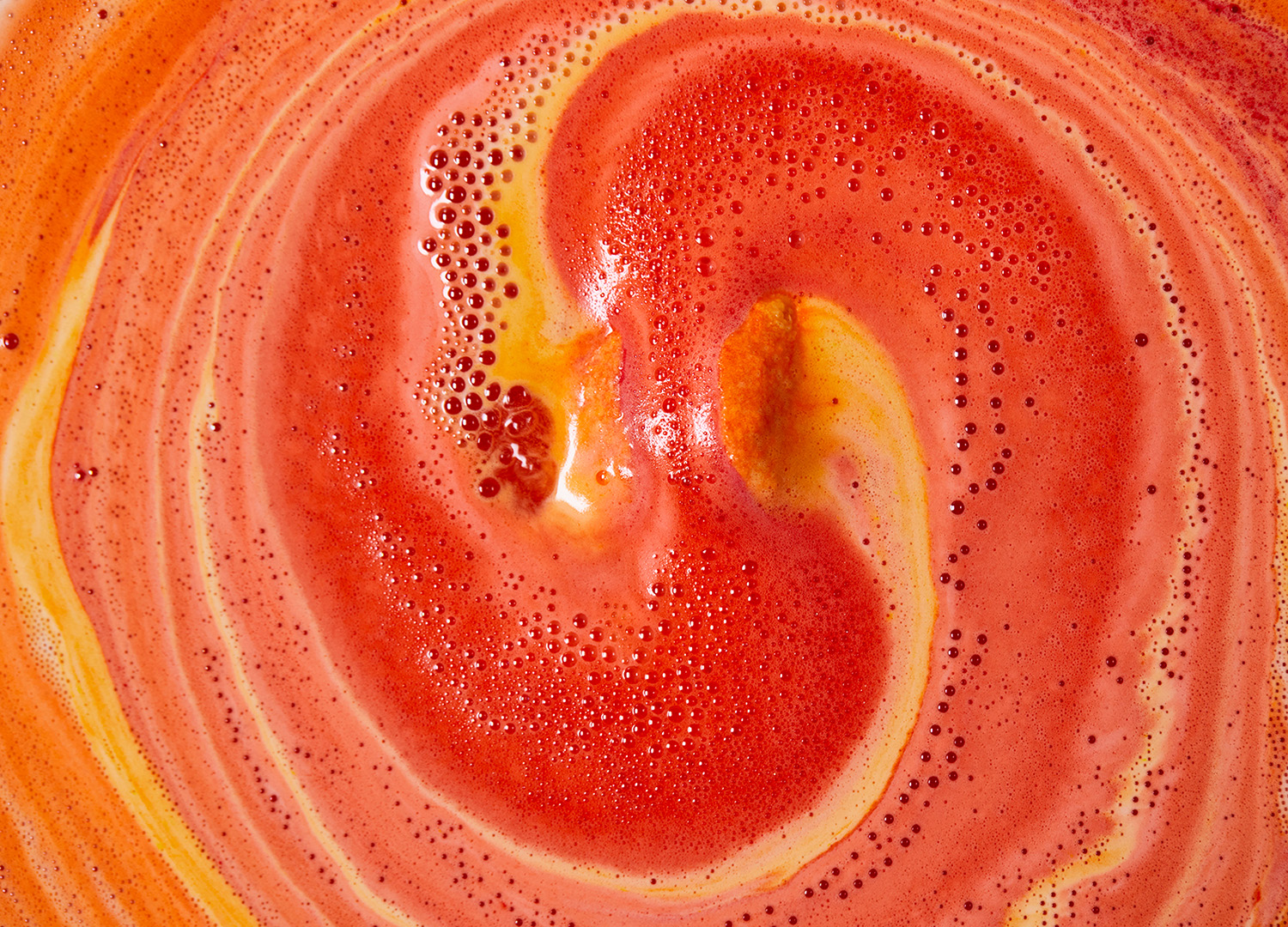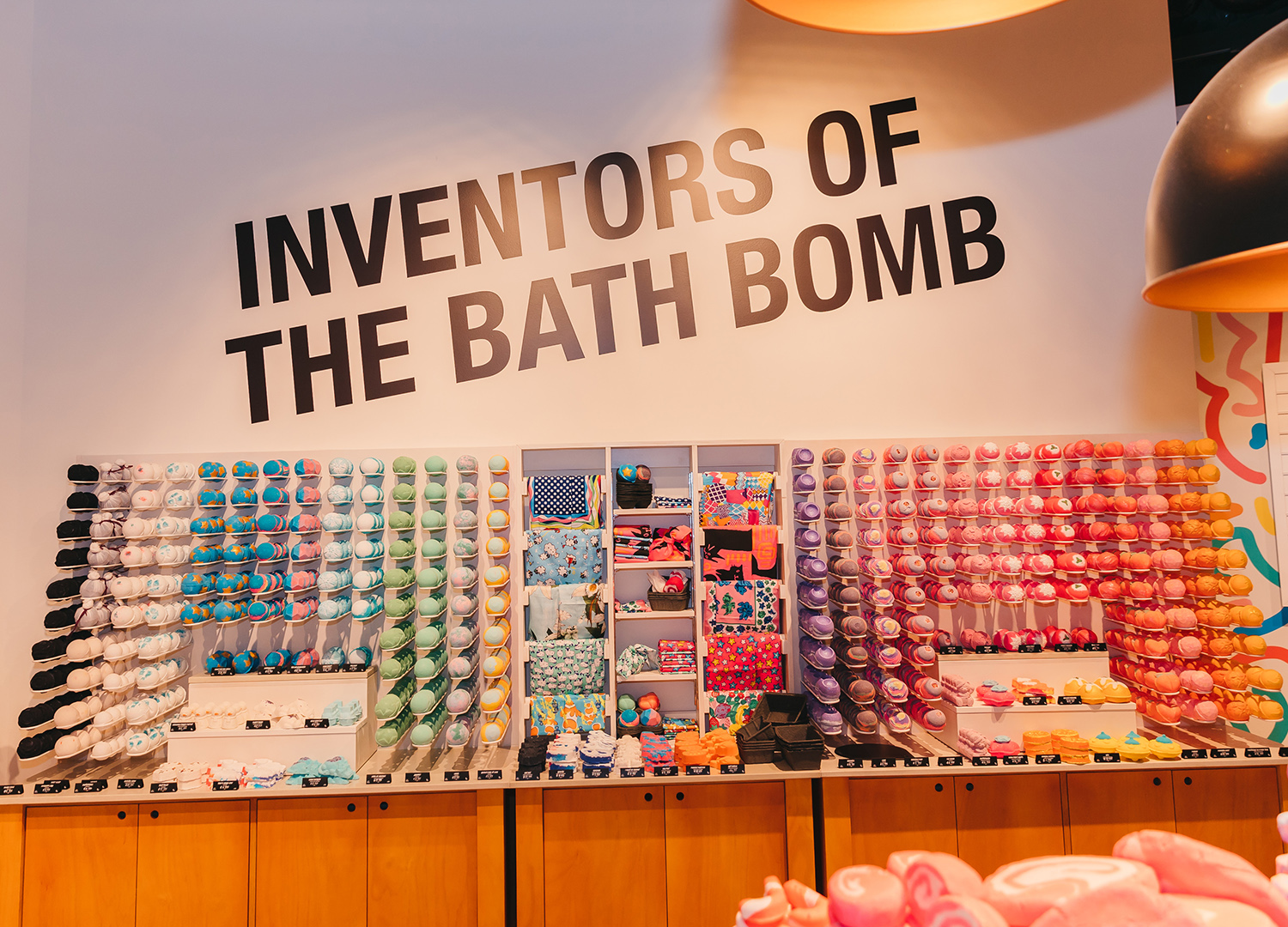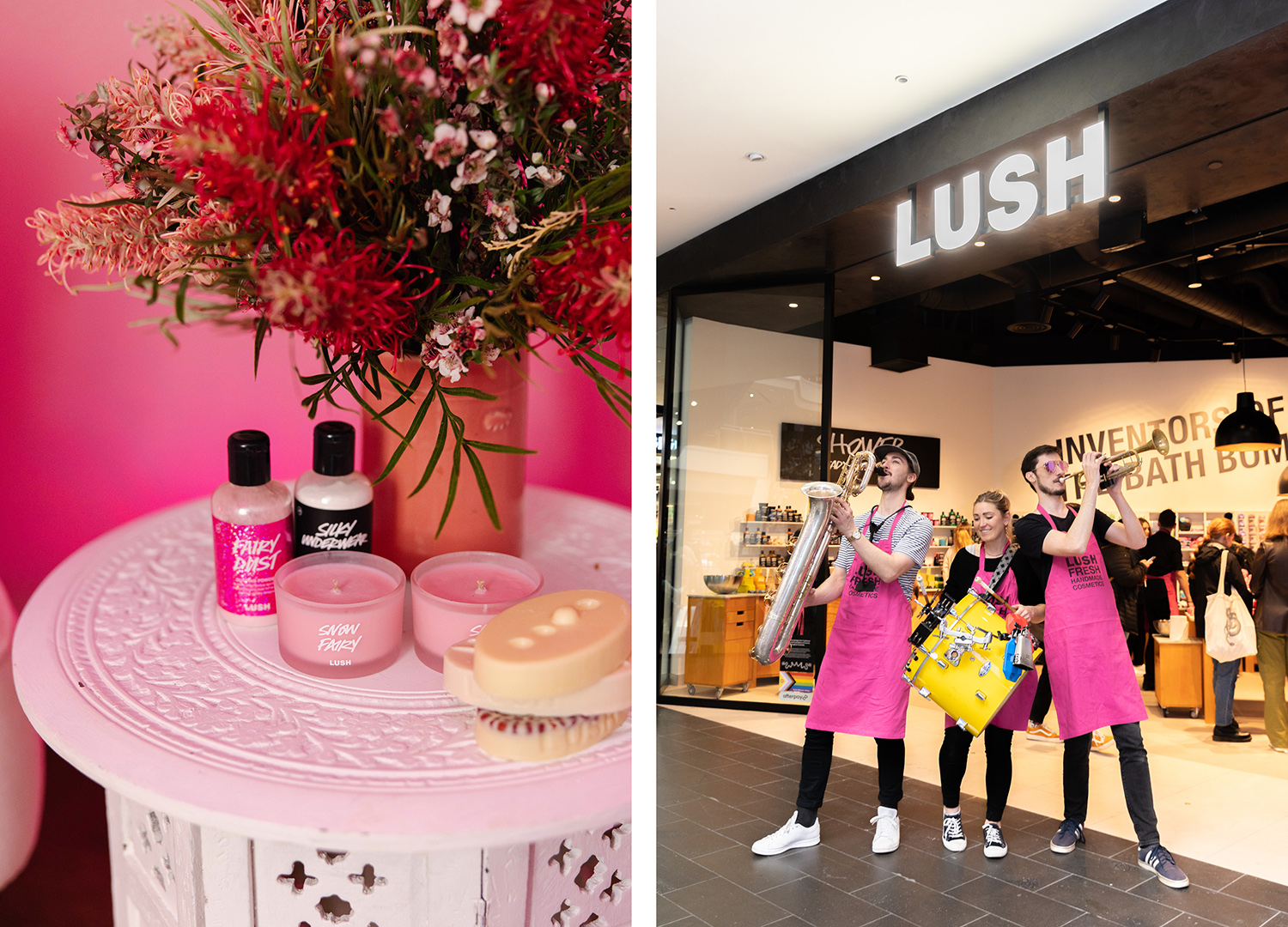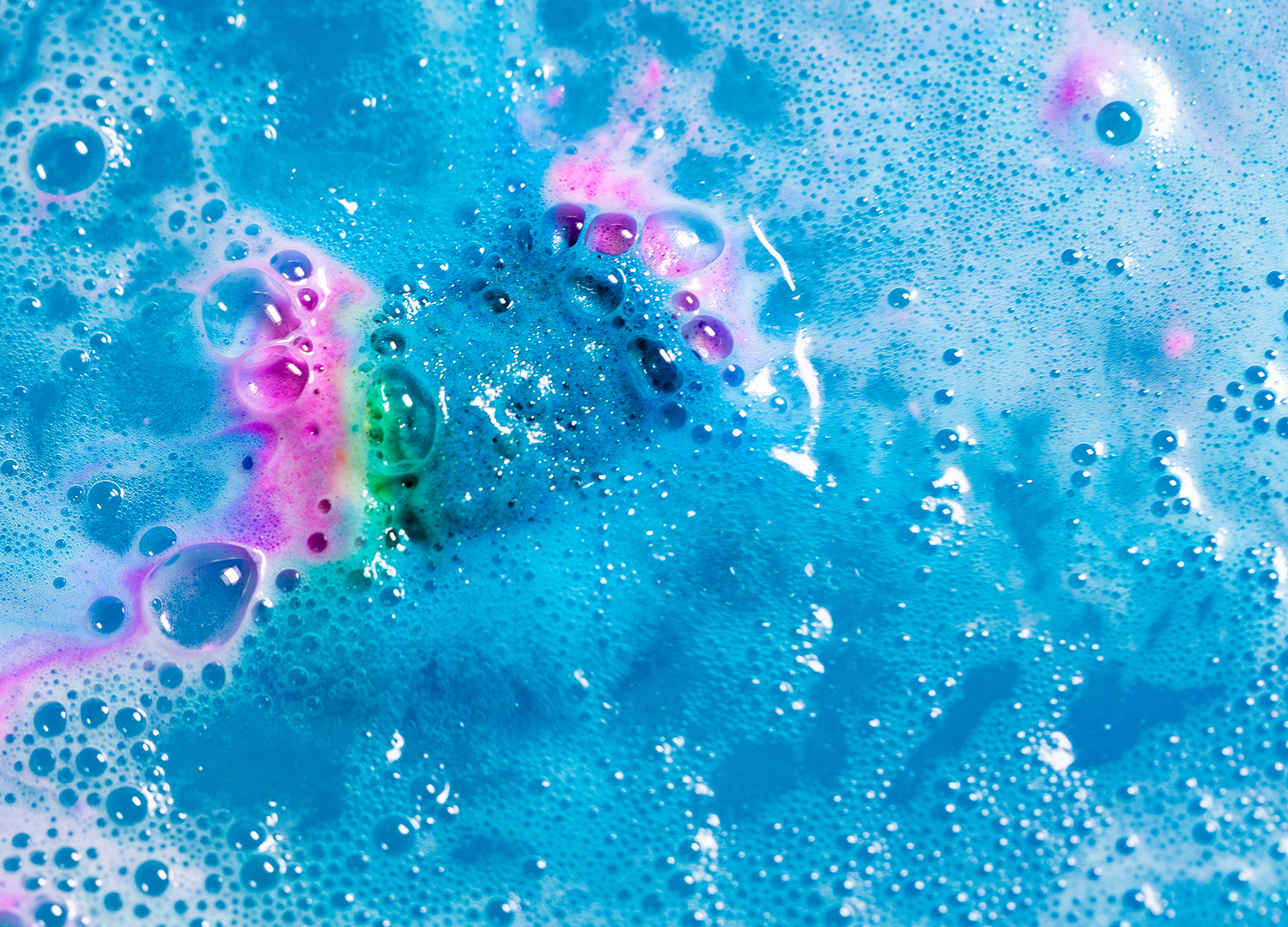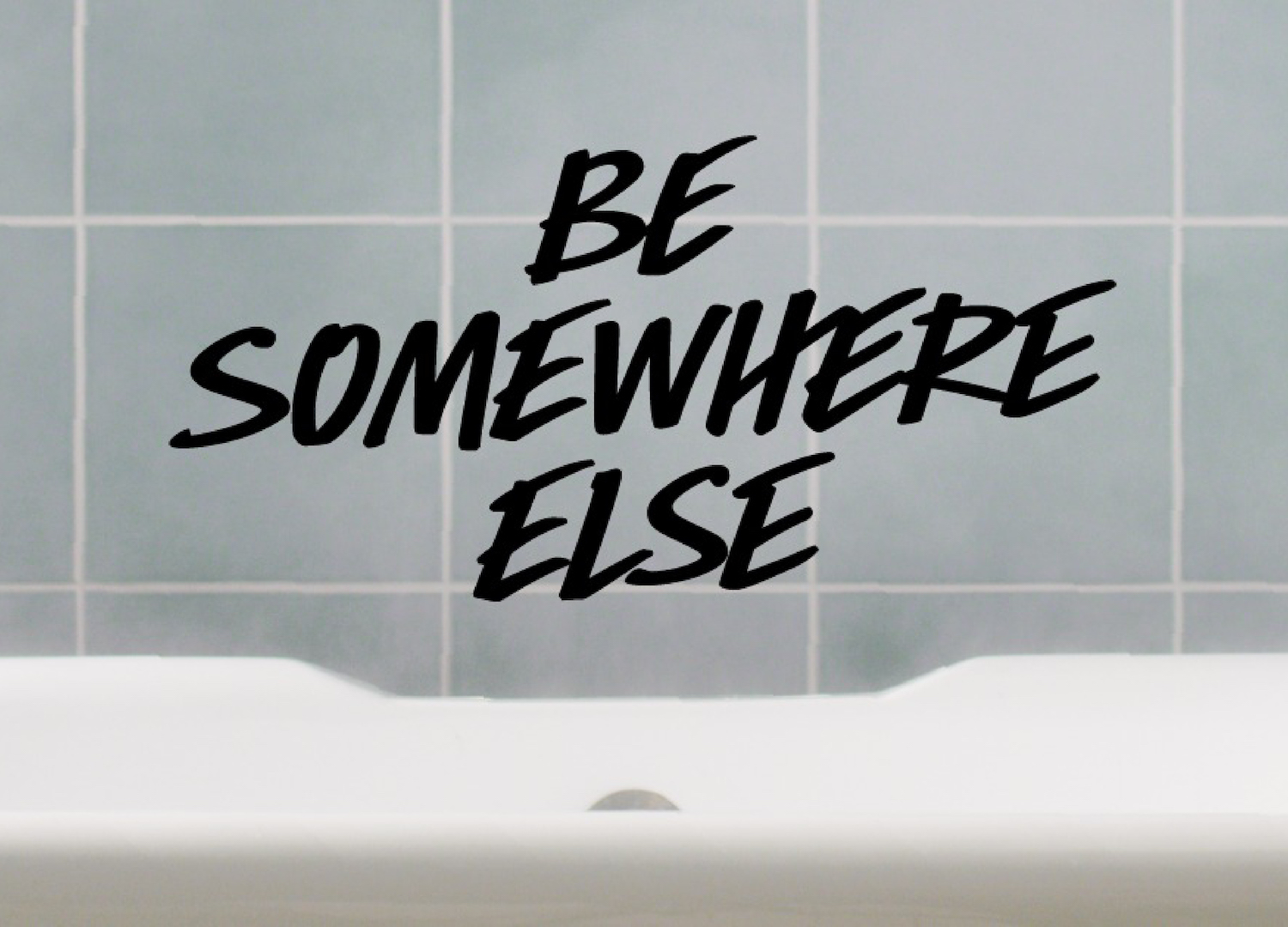
Lush Switched Off Social Media… Now It’s Pushing for Change IRL
photos COURTESY OF LUSH AUNZ
At a time when most businesses – large and small – are beholden to the whims of the algorithm (and the changing moods of tech billionaires), global self-care and beauty brand Lush – perhaps best known for its eye-catching bath bombs – decided to do things differently. In 2021, as part of an ongoing Anti-Social Media policy, it removed its social media presence on a few major platforms and decided to focus on other ways to connect with customers.
With Lush celebrating two years off the feed this year (and showing no signs of a return), we caught up with Jay Jennings, General Manager (Digital) of Lush Australia and New Zealand, to talk about the whys, hows and where-tos of going cold turkey on socials as a business.
Was there a particular catalyst that sparked the decision (especially after your previous attempt in 2019)?
We have an ethical position on a lot of subjects and have been building our digital ethics up over time, but after the Facebook Whistleblower incident in 2021, we couldn’t ignore the evidence and be present on platforms that were knowingly putting their audience at risk. We are a brand that is keenly focused on people’s health. Our products are designed to enhance wellbeing and we want to look after our customers – to help them sleep and relax – which runs entirely against what these particular platforms are designed to do.
We aren’t ‘anti’ social media… but we are ‘anti’ what some of the platforms have morphed into.
As an inherently social brand, our community is incredibly important to us. Before social even existed we were heavily active in our communities… We aren’t ‘anti’ social media – we were there right at the beginning of it with our MySpace and Facebook accounts, embracing the promise that these spaces would elevate connection, expression and community – but we are ‘anti’ what some of the platforms have morphed into: places big tech companies monetise off of our data, where toxicity is rewarded, and mistrust and polarising opinions run rife. We still use some social platforms and are experimenting with others, but we care about the safety of our community and want them to feel safe online while putting a bit of pressure on the big tech companies to do better.
That’s why we commissioned our Digital Engagement: A Social Future report with The Future Laboratory, a strategic foresight consultancy, to help elevate and develop the positive actions that are happening in this space. There’s a different future out there, beyond the one we see now, where people can engage within safe environments. We need to move the narrative from what we can’t do to what we can.
What was the response from your audience when you made the announcement?
The reaction was a mixed bag, to be honest! We faced a lot of public support with our switch-up, but also scepticism, and we still do – why did we stay on some platforms and not others? In all honesty, we were figuring it out as we went along; we didn’t and still don’t have all the answers because the landscape is ever-changing. But is that a reason to not do anything? You have to be comfortable with a decision for today and open that it could need to be changed tomorrow.
In some ways, we’re all aware of the damaging effects of social media but it’s mighty hard to separate oneself from its reach. How do you believe these effects are showing up in society more broadly?
As part of our research for the Digital Engagement: A Social Future report we surveyed 12,000 global consumers to get a snapshot of what society wants from digital platforms, which gave us a bit of insight into how the effects of social media are showing up in society. A significant 57% of consumers we surveyed felt like big brands and corporations dominate technology and online culture, while 55% want Big Tech to have less control online. Today many people experience platforms as hostile places, with nearly half (49%) of consumers believing social media platforms do not do enough to protect users from harassment, harm and manipulation.
A majority (54%) of Gen Z, believe select groups are marginalised or ignored in digital spaces, while 70% of those surveyed are calling for global legislation that protects the safety of users throughout their digital experiences. 65% of global consumers, meanwhile, don’t want social media brands to use their data for commercial benefit. Interestingly almost seven in 10 adults (69%) across the UK, the US and Japan believe that if a social media platform is unethical then brands should step away from it and 62% believe it’s up to all businesses to ensure digital spaces are ethical.
62% of consumers surveyed agreed that everybody has the ability to contribute to a safer, more inclusive digital world.
Our survey also indicated that social media is losing its grip on society. Over the past 12 months, people are spending less time on social media. Over a third (35%) of Meta users (Facebook and Messenger at 17% and Instagram, 18%), almost a third of Pinterest users (27%), a quarter of Twitter (24%), Discord (24%) and Snapchat (24%) users, over a fifth of BeReal (22%) users, 18% of TikTok users and 16% of Line users, are on these social media platforms less frequently than a year ago.
Yet despite growing concern about the impact of existing digital culture, techno-optimism continues to shine through. By 2025, an average connected person anywhere in the world will interact with connected devices nearly 4,800 times per day – about one interaction every 18 seconds. Almost half (48%) of Gen Z and Millennials are excited about the blurring of lines between physical and online retail to create a convenient and flexible shopping experience; while 41% of US consumers believe in a future when they can control and profit from sharing their data with brands; and 62% of consumers surveyed agreed that everybody has the ability to contribute to a safer, more inclusive digital world.
At the time you wrote that you’ll be turning your back on socials “until they take action to provide a safer environment for users”. What does that safer environment look like to you in an ideal world? And have you seen any positive steps to get there in the past year?
The way we look at it, a ‘safe’ social media environment would prioritise protecting user privacy, preventing the spread of misinformation and promoting positive social values. In an ideal world, platforms would be open-source, community-led and accessible, and social currency would be based on the digital integrity and wellness of its consumers. We would like to see the big tech companies take responsibility and add more regulations to enable safer spaces for all.
With technology and digital at a tipping point, we need to ensure the world shifts both in the right direction to fulfil their potential to enhance humanity and act as a tool for betterment and progress – with tech giving more than it takes away. Now is the time for techno-optimism.
In the report, we’ve put forward a framework of five principles around which this future can unfold: Sustainable, Open-source, Community-owned, Iterative, Accessible and Life-affirming.
In the past year, we’ve seen positive steps taken by social media companies towards creating a safer environment, such as introducing policies to prevent the spread of harmful content, including misinformation and hate speech. However, we believe that more needs to be done to address the root causes of these issues, such as the algorithms that prioritise engagement over user safety.
We would welcome discussions with any of the tech giants on the subject of user safety and have been in frequent communication with Pinterest to learn about the changes they are making to the platform with user protection in mind.
Since moving away from social media, we have focused on other ways to connect with our community, such as through in-store experiences, email updates and messaging through our own channels like lush.com and the Lush app.
Is it more than a symbolic statement? Are you working with tech giants to create that safer environment?
We are not experts in content moderation or platform regulation – we are after all a medium-sized fish in a huge cosmetic pond, rather than a big fish in a tech pond! However, we would be very open to any discussions such platforms wish to have with us.
Do you think social media can ever be ethical? Where do you see its role in effecting positive change?
Despite our concerns about certain social media platforms in their current form, we do have a positive outlook on the future of digital technology and its potential to benefit both society and the planet in a harmonious way. We believe that social media has the power to drive positive change and connect people, and we recognise the importance of accountability and transparency in social media companies. In order to get to this point, it’s essential for these companies to prioritise ethical practices, and for users to take responsibility for their online interactions to ensure that social media is used in a responsible and ethical way. Ultimately, whether social media is ethical or not depends on its usage and governance, and we urge all stakeholders to work together to create a positive and responsible digital future.
Despite our concerns about certain social media platforms in their current form, we do have a positive outlook on the future of digital technology.
What do you think is the place of social media for businesses like yours moving into the future?
We believe that social media should be a primarily user-governed environment, used to connect individuals and drive positive exchanges. When it comes to businesses on social media, our role should be to take a backseat and contribute by supporting and encouraging positively impactful conversations, rather than dominating the space with a sales agenda. Moving forward, businesses must prioritise transparency and accountability, and consumers must play an active role in ensuring that social media is used for positive outcomes.

